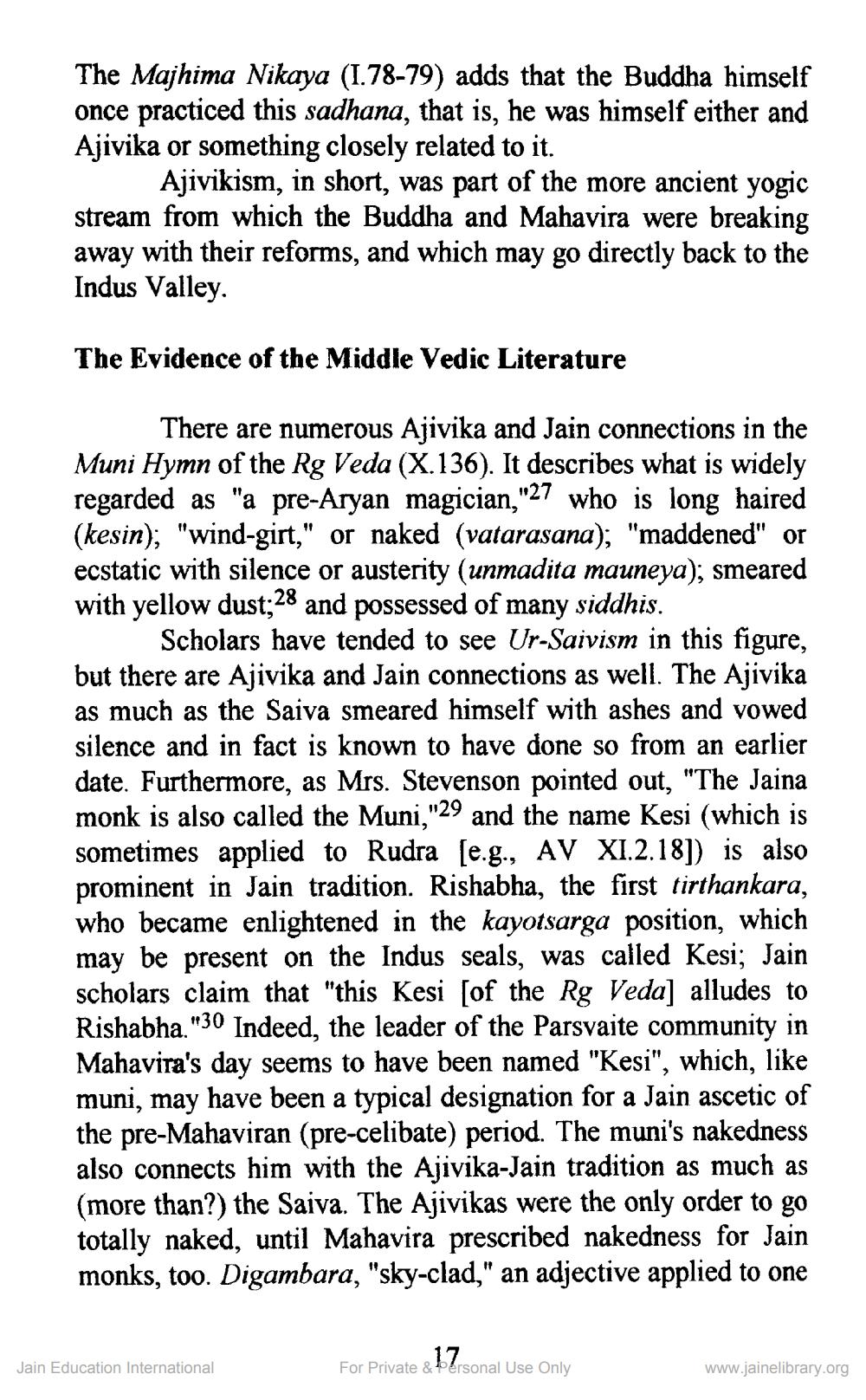________________
The Majhima Nikaya (1.78-79) adds that the Buddha himself once practiced this sadhana, that is, he was himself either and Ajivika or something closely related to it.
Ajivikism, in short, was part of the more ancient yogic stream from which the Buddha and Mahavira were breaking away with their reforms, and which may go directly back to the Indus Valley.
The Evidence of the Middle Vedic Literature
There are numerous Ajivika and Jain connections in the Muni Hymn of the Rg Veda (X.136). It describes what is widely regarded as "a pre-Aryan magician,"27 who is long haired (kesin); "wind-girt," or naked (vatarasana); "maddened" or ecstatic with silence or austerity (unmadita mauneya); smeared with yellow dust;28 and possessed of many siddhis.
Scholars have tended to see Ur-Saivism in this figure, but there are Ajivika and Jain connections as well. The Ajivika as much as the Saiva smeared himself with ashes and vowed silence and in fact is known to have done so from an earlier date. Furthermore, as Mrs. Stevenson pointed out, "The Jaina monk is also called the Muni,"29 and the name Kesi (which is sometimes applied to Rudra [e.g., AV XI.2.18]) is also prominent in Jain tradition. Rishabha, the first tirthankara, who became enlightened in the kayotsarga position, which may be present on the Indus seals, was called Kesi; Jain scholars claim that "this Kesi [of the Rg Veda] alludes to Rishabha."30 Indeed, the leader of the Parsvaite community in Mahavira's day seems to have been named "Kesi", which, like muni, may have been a typical designation for a Jain ascetic of the pre-Mahaviran (pre-celibate) period. The muni's nakedness also connects him with the Ajivika-Jain tradition as much as (more than?) the Saiva. The Ajivikas were the only order to go totally naked, until Mahavira prescribed nakedness for Jain monks, too. Digambara, "sky-clad," an adjective applied to one
Jain Education International
17
For Private & Personal Use Only
www.jainelibrary.org




